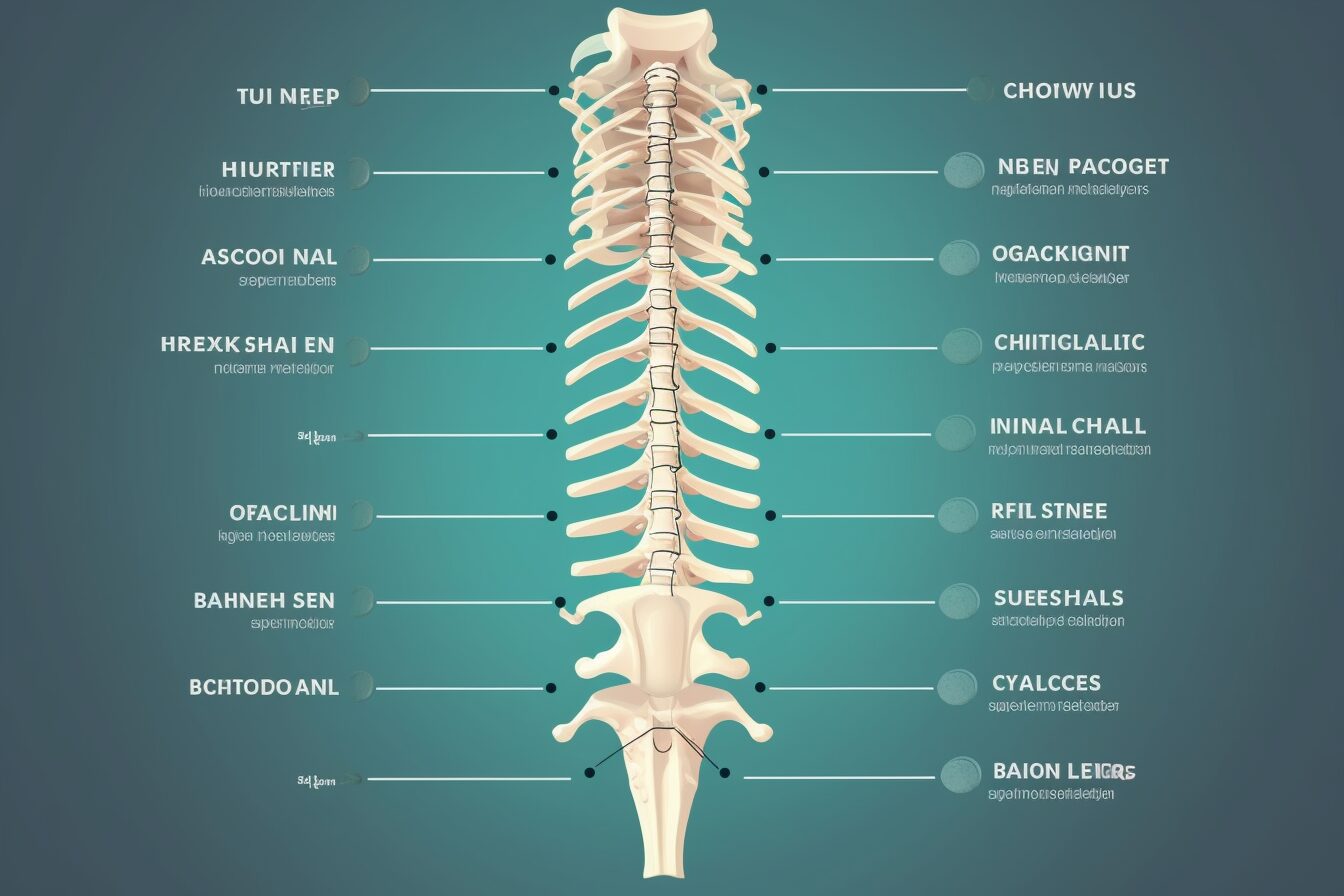Ease Your Back: Top Decompress Spine Exercises for Relief
Imagine a life where every step you take is free from back pain, thanks to decompress spine exercises. This isn't just wishful thinking; it's entirely possible with the right approach and understanding of spinal health. Through these carefully curated movements, you can alleviate pressure on your joints and nerves, enhancing overall well-being.
Diving into this guide, you'll familiarize yourself with spinal decompression fundamentals, master exercises ranging from easy stretches to intricate maneuvers, and understand the profound impact of incorporating these routines consistently in your life. Plus, we'll touch upon why consulting healthcare professionals before starting is crucial for a personalized experience.
Embarking on this journey, we'll uncover the magic of tweaking our workout routines slightly, which can majorly elevate our spinal health and reduce discomfort, guiding us towards a more robust spine and a joy-filled existence.
Table Of Contents:
- Understanding Spinal Decompression Basics
- Essential Spinal Decompression Exercises
- Safety First - Consulting Healthcare Professionals
- Benefits Beyond Pain Relief
- Advanced Decompression Techniques
- Integrating Spinal Decompression into Daily Life
- Maintaining Long-Term Spinal Health
- The Role of Accessories in Enhancing Exercises
- FAQs about Decompress Spine Exercises
- #faq3Conclusion
Understanding Spinal Decompression Basics

If you've ever felt like the weight of the world is on your shoulders, quite literally causing back pain, spinal decompression might just be what the doctor ordered. It's not about pulling you apart; it’s more about giving your spine a little breathing room.
Spinal decompression works by gently stretching the spine to relieve pressure on compressed discs and nerves. Think of it as undoing a traffic jam in your spinal stenosis or disc disease, allowing everything to flow more freely. This method can correct posture, improve stability, and strengthen back muscles – vital for anyone suffering from sciatica or degenerative disc disease.
How Spinal Decompression Works
The magic behind spinal decompression lies in its ability to create negative pressure within the disc space. By creating a vacuum, this technique persuades slipped or protruding discs to pull back, markedly alleviating the stress on adjacent nerves branching out from the spine. This technique isn't a quick fix; rather, it nurtures enduring improvements for your spine's well-being over the span of time.
Beyond immediate pain relief, regular practice of spine-decompressing exercises improves blood flow and increases flexibility across surrounding muscles - all without setting foot in an operating room for decompression surgery. For those wary of going under the knife or spending time upside down on inversion tables (though they have their place), simple at-home exercises offer a safe starting point for reclaiming your spine's health.
Incorporating these practices into daily routines doesn’t require heavy lifting but rather an understanding and commitment towards gentle stretches that target key areas affected by poor posture or compressive forces acting against us every day.

Subscribe To Dr Mike's MVP Newsletter!
Exclusive content, interesting topics, real insights.

Essential Spinal Decompression Exercises
Low-Intensity Starter Moves
Gentle exercises are perfect for beginners who want to ease into spinal decompression. A popular starting point is the prayer stretch, which involves kneeling on all fours and stretching your arms forward while sitting back on your heels. Adopting this stance elongates the backbone and eases strain in the lumbar region, fostering a sense of relief.
The child's pose is another low-intensity move that not only feels great but also promotes flexibility along the spinal column. To perform this exercise, sit on your knees with them spread apart slightly wider than hip distance, fold forward at your hips, extending your arms out in front of you or alongside your body as you gently pull yourself down towards the floor.
Progressing to Moderate Intensity
As you get more comfortable with these starter moves, it’s time to ramp up the intensity a bit without overdoing it. Bar hang-ups are an excellent way to use body weight naturally for spinal decompression. Simply find a sturdy chin-up bar or something similar; grasp it with both hands shoulder-width apart and let your weight hang freely from it. Letting gravity take the reins, you're essentially making room between your spinal bones.
Chest stretches can further aid in relieving compressive forces along the spine caused by poor posture or prolonged periods of sitting. Stand facing away from a wall placing both palms against it at shoulder height then gently lean forward until you feel a nice stretch across your chest and shoulders – this position encourages proper alignment of the spine while standing or walking.
Incorporating these exercises into daily routines significantly contributes to improved stability, strength in muscles surrounding the spine leading to better posture overall - crucial steps toward long-term spinal health without needing invasive procedures like decompression surgery.
Key Takeaway:
Start with gentle exercises like the prayer stretch and child's pose to ease into spinal decompression. As you get comfortable, ramp up the intensity with bar hang-ups and chest stretches for better posture and spine health without surgery.
Safety First - Consulting Healthcare Professionals
Before you jump into spinal decompression exercises, it's a smart move to chat with healthcare professionals. Why? Because not all backs are created equal. If you're grappling with back discomfort or aiming to enhance your stance, it's essential to seek out guidance that's custom-fitted for your unique situation.
Seeking help from healthcare experts could be the pivotal move for those plagued by relentless discomfort. Possessing the know-how, they can pinpoint hidden problems and suggest movements that won't aggravate your situation. It's like having a personal guide in your journey toward spinal health.
To make sure your routine is safe and effective, consulting with healthcare professionals cannot be overlooked. This isn’t about being overly cautious; it’s about ensuring every stretch and strengthening exercise brings you closer to feeling great without risking injury. Mastering the art of warming up before activity and cooling down afterward is key, as it primes your body for exercise and facilitates healing post-exercise.
Benefits Beyond Pain Relief
When we talk about spinal decompression exercises, most folks jump straight to back pain relief. But let's not sell these moves short. They're like the Swiss Army knife of workouts—good for so much more than just fixing a sore back.
First off, improving blood flow is a biggie. Imagine your body's circulation getting a turbo boost, making you feel more alive and kicking than ever before. Enhancing your spine's health doesn't just stop there; it revitalizes your entire bodily functions, making everything work better.
Increase flexibility? Check. These exercises turn you into Stretch Armstrong, reaching jars on the top shelf with ease or tying shoelaces without that awkward grunt. More flexibility means less chance of injury doing everyday things.
Now let’s get to strengthening muscles—the unsung hero of spinal health. By focusing on the muscles surrounding your spine, you’re building an ironclad fortress around those precious vertebrae and nerves exiting the spinal column.
Safety First - Consulting Healthcare Professionals
We all love going rogue now and then but hear us out: consulting healthcare professionals before starting any new exercise regimen is crucial. Healthcare experts possess the skill to customize workouts that not only suit your individual requirements but also ensure they're beneficial without putting you at risk. Warm-up techniques, cool-down strategies—you name it, they've got tips on how to do it right.
This approach isn't merely about caution; it's a strategic method to enhance wellness and avoid aggravating conditions such as sciatica or degenerative disc disease through each purposeful action.
Advanced Decompression Techniques

Cultivating Strength with Advanced Moves
If you've got the basics down and are looking to challenge yourself, sophisticated techniques in spinal decompression can take your practice to new heights. These moves aren't just about pulling off impressive feats; they're focused on deepening the strength of muscles surrounding your spine, creating a robust foundation for overall health.
Starting with shoulder-width apart stances or engaging in exercises that require you to maintain a ceiling hold position significantly enhance muscle engagement. By executing these sophisticated maneuvers properly, individuals can mitigate discomfort stemming from compressed nerves and slouched stances through the distribution of pressure uniformly along the backbone. Achieving this equilibrium is pivotal, especially for individuals grappling with ailments such as disc disorders or sciatica, which can be quite debilitating.
Incorporating an inversion table into your routine can also amplify benefits by allowing gravity to aid in the decompression process. By suspending yourself upside down or at an angle where your head is lower than your heart, you increase blood flow back towards upper body organs while giving those hard-working spinal discs some much-needed relief. But remember, safety first: it's always wise to warm up properly before diving into these more demanding poses.
To really target specific areas such as the left knee or engage in hamstring stretches that promote flexibility alongside strength building is key too. For instance, adopting poses that stretch out this area while keeping attention on maintaining long breaths helps not only increases flexibility but also ensures ample oxygen supply which aids further in recovery processes post-exercise.
Integrating Spinal Decompression into Daily Life
Regularly practicing spinal decompression exercises is crucial for sustaining your health over time. It's like giving your spine a much-needed stretch, letting it breathe and reset from the compressive forces of daily life.
But how do you weave these exercises seamlessly into your everyday routine? The key is understanding that integrating exercises doesn't mean overhauling your schedule but smartly incorporating movements that contribute significantly to sustained spinal health.
Daily Routines with a Twist
To start, consider the power of posture. Poor posture can be an insidious enemy to our spine’s well-being. Making small adjustments to how we sit, stand, and move can create space within our spinal column, relieving pressure on nerves exiting the spine. A simple change like ensuring your computer screen is at eye level or taking frequent breaks to walk around can make all the difference.
Next up are those micro-moments throughout the day where you can sneak in some decompression therapy—like using an inversion table for a few minutes each morning or performing gentle neck stretches while waiting for your coffee to brew. These moments add up.
Making Exercise Multitask
Incorporating strength training into routines not only builds muscle but also helps support and stabilize your spine naturally by creating more muscular surroundings around it which improves blood flow and increases flexibility - essential components for reducing pain levels. Performing activities such as bar hang-ups with arms straight and palms facing out gently pulls on the entire body weight helping alleviate symptoms caused by increased pressure on discs. Warm-up techniques recommended by orthopedic experts, include starting positions that prepare muscles surrounding the area being worked upon thus making them safer and more effective during exercise execution.
Key Takeaway:
Slide spinal decompression into your day without a schedule shake-up. Adjust your posture, sneak in stretches during short breaks, and blend strength training with daily tasks for a healthier back.
Maintaining Long-Term Spinal Health
Keeping your spine healthy transcends merely avoiding discomfort; it's fundamental to living a dynamic and full life. Let’s talk straight - your spine is a big deal, and taking care of it should be too. A mix of consistent practice and lifestyle adjustments can keep you standing tall without the creaks and groans.
Lifestyle Adjustments for Spine Health
Embarking on the path to preserving your spine's well-being begins with modest alterations, yet these can lead to significant transformations. First off, think about how much time you spend sitting each day. Poor posture at your desk or on the couch puts unnecessary pressure on your spine. Making an effort to sit properly can greatly reduce this strain.
Next up, let’s get moving. Regular exercise strengthens muscles surrounding your spinal column, offering it better support. This doesn’t mean you need to become a gym rat overnight but incorporating activities like walking or yoga into your daily routine makes a difference.
Diet plays its part as well by keeping those bones strong. Calcium-rich foods along with vitamin D help ensure bone density stays where it needs to be for all that upright living we do.
Last but not least, hydration is key for maintaining healthy discs between vertebrae in the spine. Ensuring you sip water consistently during the day can keep those discs in your spine juicy and sponge-like, serving as natural buffers for whatever life throws at you.
Incorporating these habits might seem small individually but together they create an environment where your spine can thrive long-term. Check out more tips here.
The Role of Accessories in Enhancing Exercises
When it comes to spinal decompression exercises, diving deeper into relief and healing isn't just about the moves you make. Equally, the equipment you utilize plays a pivotal role in this journey. That's right, we're talking inversion tables and support braces—your not-so-secret weapons for a healthier spine.
Inversion Tables: Upside Down Yet Right on Target
Inversion tables flip the script on spinal health, literally. These gadgets, through the subtle force of your own mass against gravity's pull, craft gaps among your spinal bones, easing discomfort and mitigating stress. Imagine hanging upside down like a bat; sounds fun but it does wonders for increasing blood flow and alleviating symptoms caused by conditions such as sciatica or degenerative disc disease.
Utilizing this method, you're empowered to delve into more profound spinal relief within the comfort of your abode, sidestepping the necessity for constant expert intervention whenever discomfort in the back arises. For those considering this route, support braces available here provide additional stability during use.
Support Braces: Stability Where It Counts
Moving onto ground level now—support braces bring their A-game by stabilizing the lower back during everyday activities or specific decompression exercises. They’re particularly helpful post-decompression surgery when keeping everything aligned is crucial for recovery.
Think of them as personal scaffolding for your spine; they ensure that while you work towards strengthening those core muscles surrounding your spinal column, no unwanted stress is placed on vulnerable areas thereby enhancing accessories' effectiveness even further.
All said if you're serious about maintaining long-term spinal health through at-home exercises or recovering safely post-surgery investing in quality accessories like inversion tables and support braces can significantly amplify your efforts toward achieving that goal.
FAQs about Decompress Spine Exercises
How can I decompress my spine naturally?
Try gentle stretches like child's pose or hang from a bar. These moves help by easing pressure off your back.
How long does it take to fully decompress the spine?
Results vary, but many feel relief after a few weeks of consistent exercises. Patience and persistence are key.
Is decompressing your spine good?
Absolutely. It eases back pain, improves posture, and boosts flexibility when done correctly and regularly.
Do spinal decompression exercises work?
Yes, they do. Regular practice strengthens your back, alleviates pain, and enhances mobility over time.
Conclusion
So, you've explored the world of decompress spine exercises. You now know these movements can significantly ease back pain and enhance your posture.
Begin by softly stretching, as this is crucial for easing into the process. As you progress, integrating more intense exercises will further benefit your spinal health. Talking to doctors or therapists can make sure your path forward is both safe and fruitful.
Exploring these methods not only eases discomfort but also enhances circulation and augments suppleness, which are essential for the routine tasks we undertake. And if ready for a challenge, advanced techniques await to deepen your practice.
Incorporating these exercises into daily life isn't just beneficial; it's transformative. With consistency comes long-term spinal health benefits that let you live fuller and move freer.
Leverage tools like inversion tables when appropriate but remember—the foundation lies within the regular practice of decompress spine exercises themselves. This is where true strength builds.
18600 Main St STE 110, Huntington Beach, CA 92648

Subscribe To Dr Mike's MVP Newsletter.
Get In Touch
(714) 794-2171
Office Hours
Monday-Thursday:
7:00 am - 11:00 am, 2:00 pm - 6:00 pm
Friday: Closed
Saturday: By Appointment Only
Sunday: Closed

(714) 794-2171
Subscribe To Dr Mike's MVP Newsletter.
Office Hours
Monday-Thursday:
7:00 am - 11:00 am, 2:00 pm - 6:00 pm
Friday: Closed
Saturday: By Appointment Only
Sunday: Closed
18600 Main St STE 110, Huntington Beach, CA 92648
Huntington Beach Chiropractic | Copyright ©2025 | Website by iTech Valet
